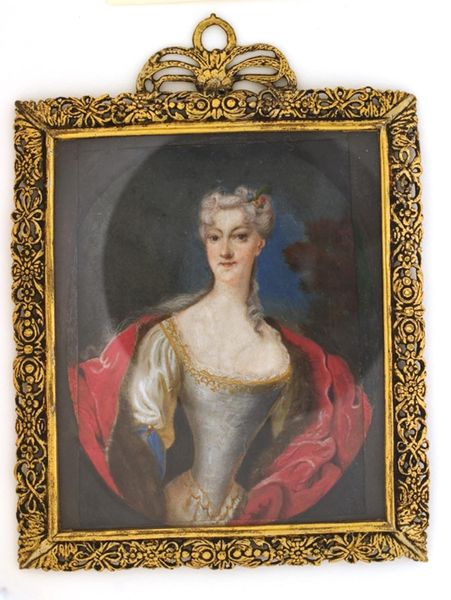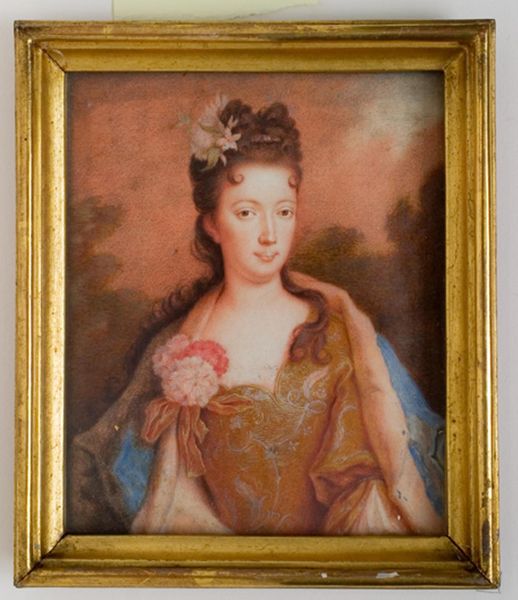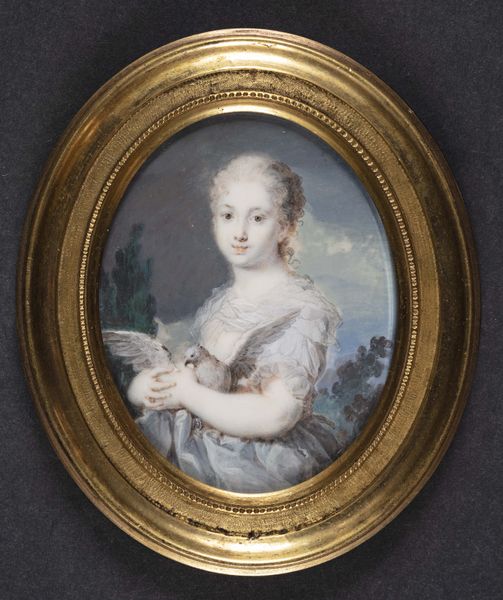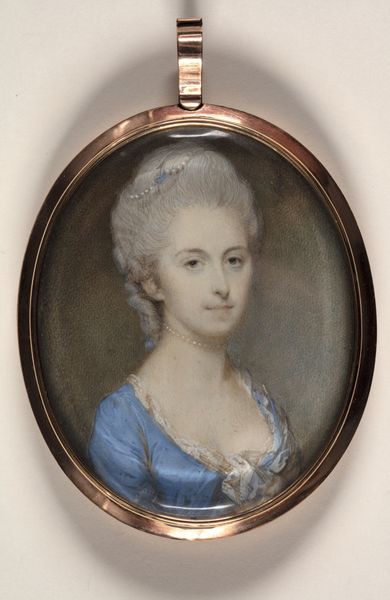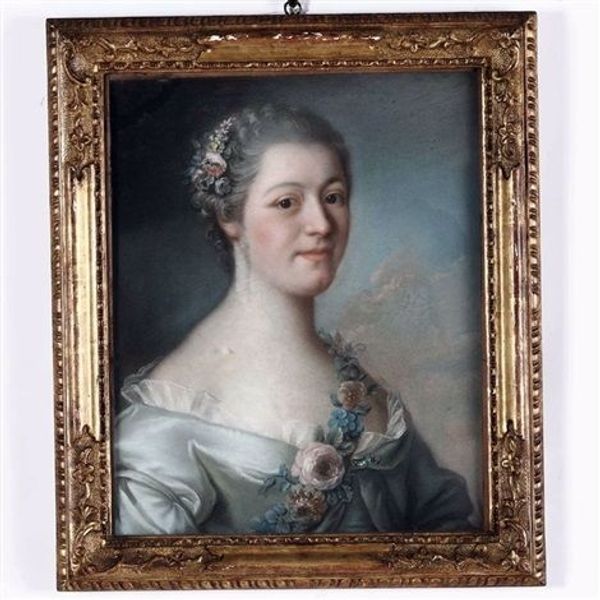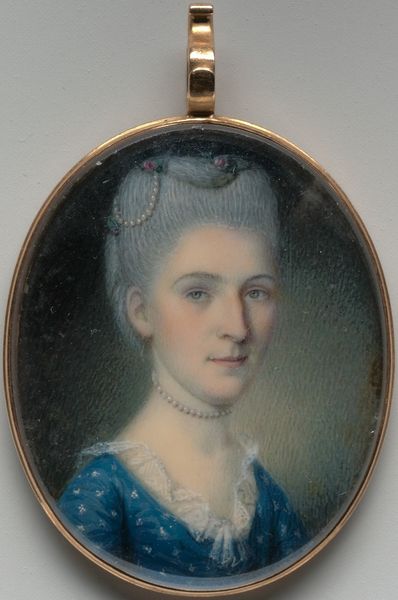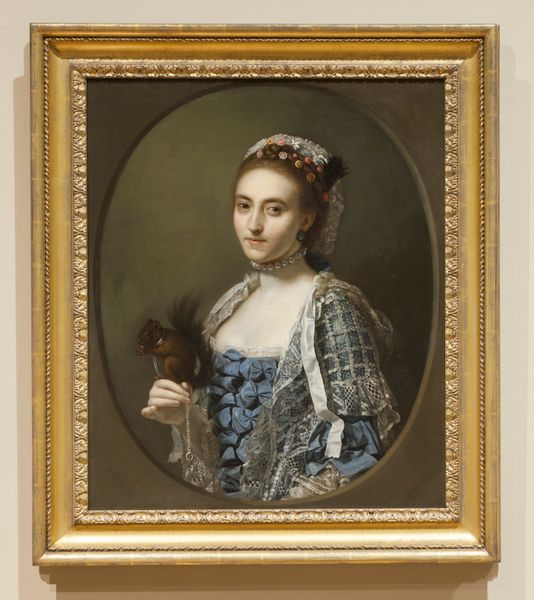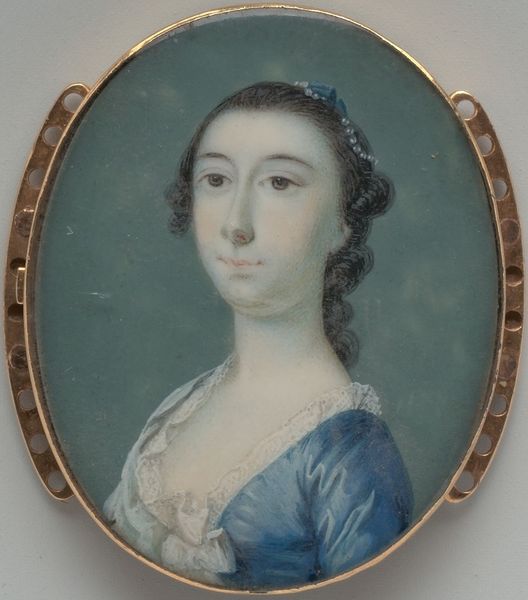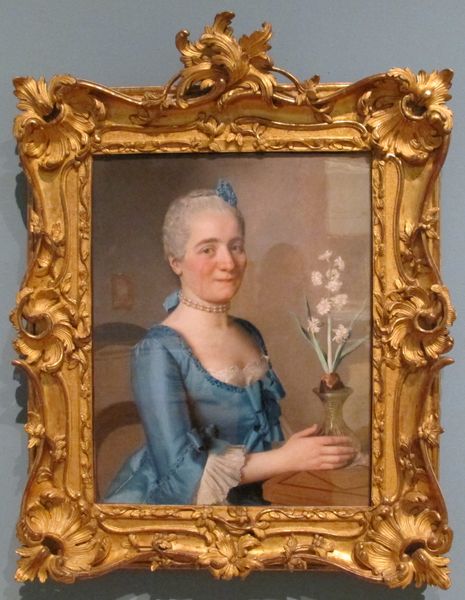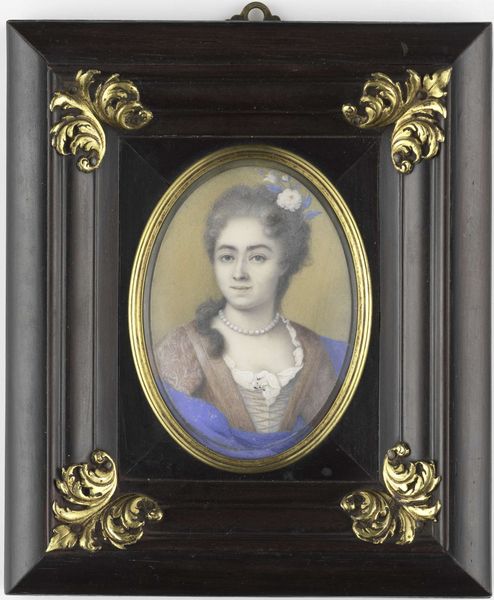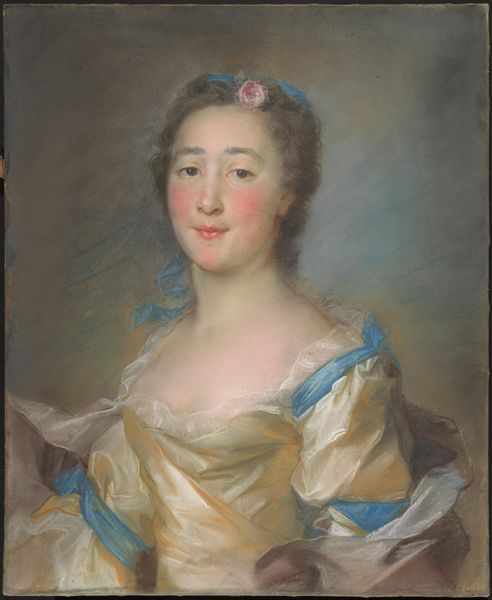
Dimensions: 23 7/8 x 17 5/8 in. (60.6 x 44.8 cm)
Copyright: Public Domain
Curator: Before us, we have John Singleton Copley's "Mrs. Edward Green (Mary Storer)," created in 1765, an oil painting residing here at the Metropolitan Museum of Art. Editor: What immediately strikes me is its ethereal quality. There’s a certain lightness, almost a translucence to her skin and dress against that striking blue backdrop. Curator: Indeed. Copley masterfully uses light to sculpt form. Note the way the light catches the edges of her face, creating a luminous effect. Consider too, the compositional balance. The soft curve of her neckline echoes the curve of the rose she holds, guiding our eye. Editor: And that blue silk! It's clearly a precious fabric, painstakingly rendered to communicate luxury and social standing. How was this textile acquired, and who was involved in its production and trade? These materials didn’t just appear. Curator: An important consideration. Copley was painting the burgeoning elite of colonial America. It reflects a material world built on complex global exchanges and yes, exploitative labor practices. Look at how Copley carefully modeled the dress’ folds; he uses short brush strokes to show the way the fabric clings to her body. Editor: Those are clearly indicators of a prosperous life. The material decisions reflect how it represents far more than her image, this shows labor. Curator: I concur that her very presence becomes a signifier within this canvas. Her demure gaze and the almost hesitant way she holds the flower create a reading of modesty and refinement, further emphasizing the social codes being depicted. Editor: What do we know about the pigment choices here? This rich blue probably came at a great cost to the sitter to procure; consider also the cost for such a large canvas and for Copley's time and talent, it's an equation of immense capital! Curator: All these details become part of the language the painting speaks. Through form, color, and composition, we decode the complex social and cultural codes of 18th-century America. Editor: And in unpacking those codes, we uncover the complex processes and social dynamics that made such representations possible. Art is rarely just the image we see.
Comments
No comments
Be the first to comment and join the conversation on the ultimate creative platform.

